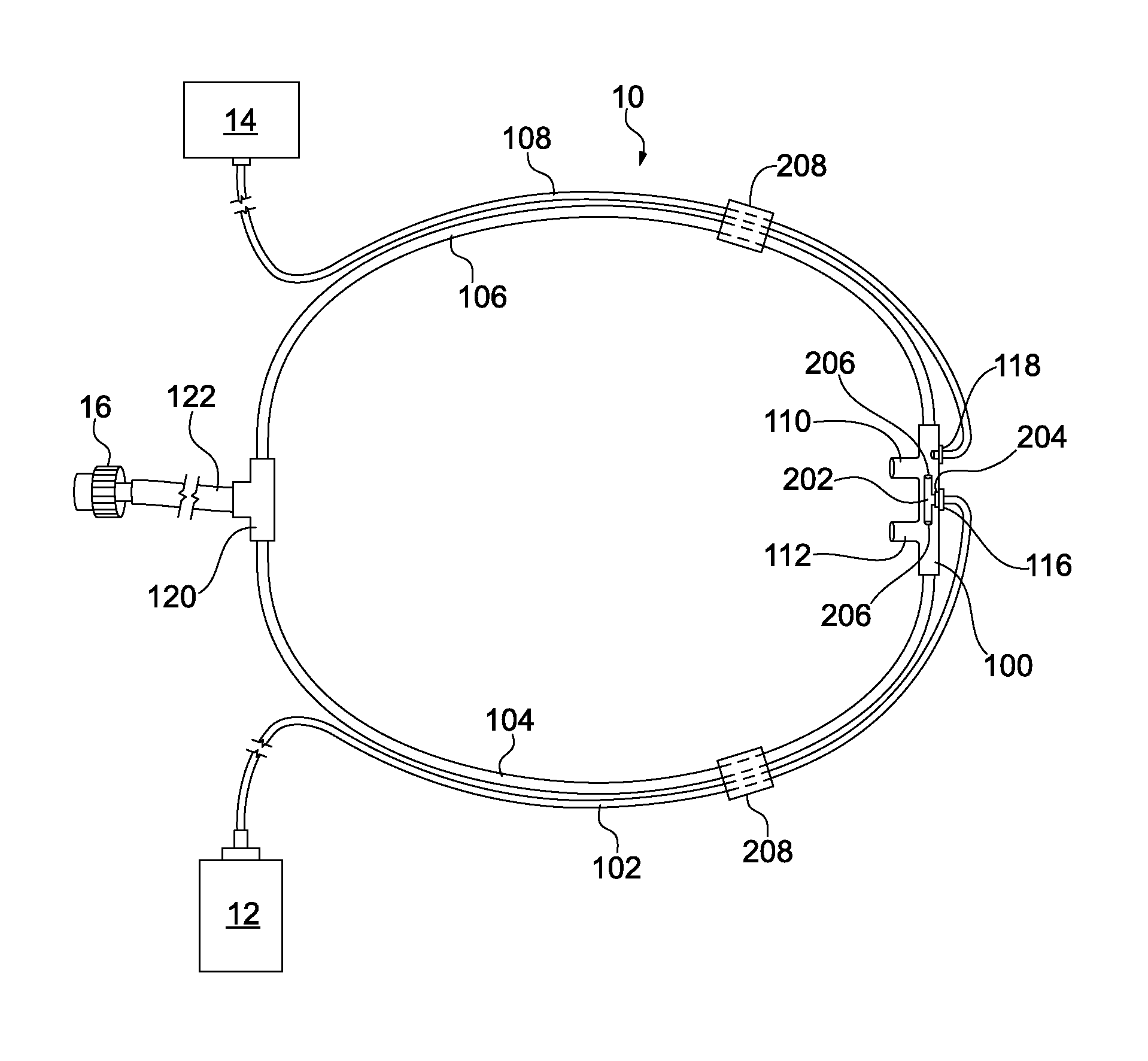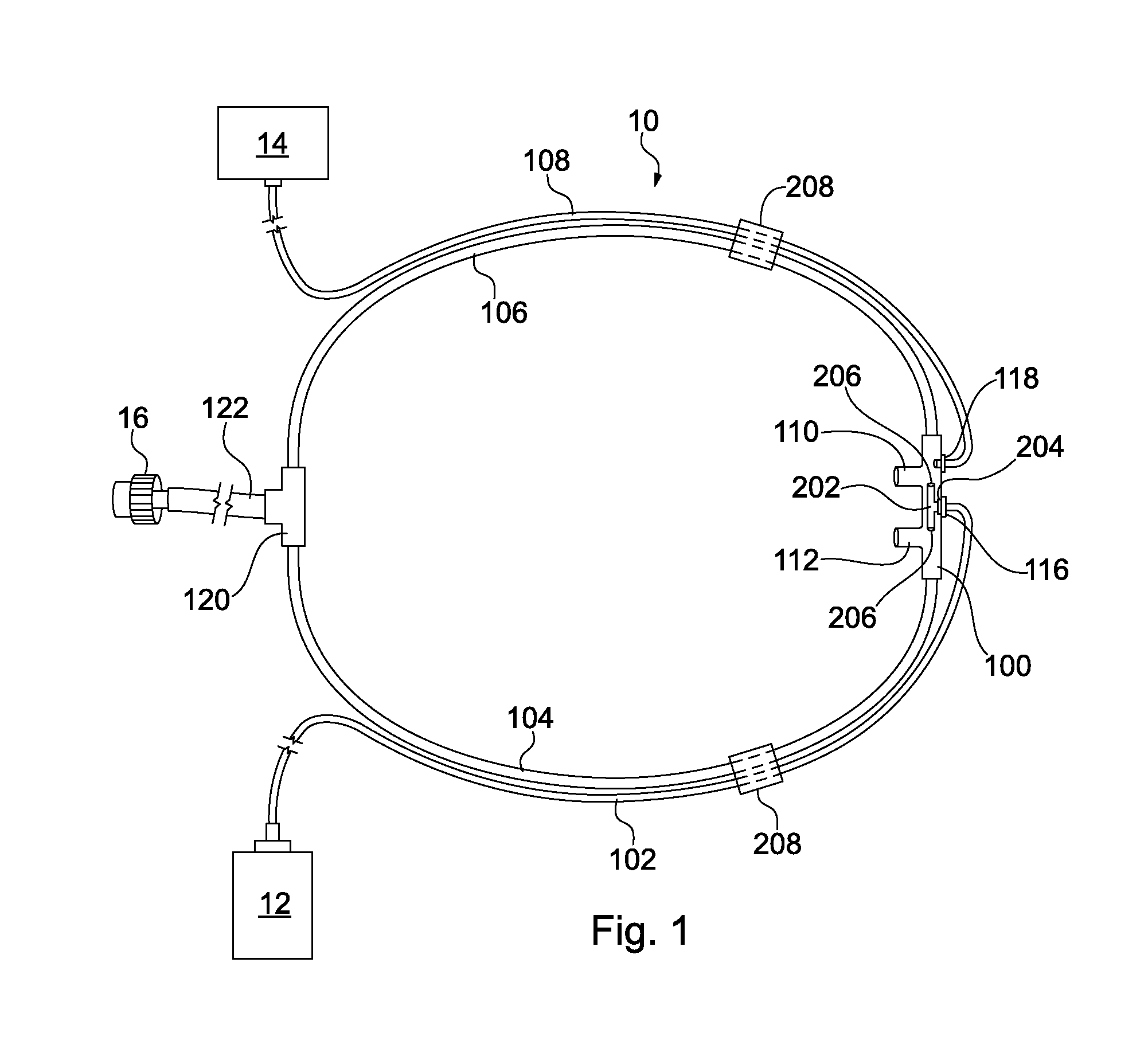Nasal Interface Device
a technology of nasal interface and saline, which is applied in the direction of valve operating means/releasing devices, process and machine control, instruments, etc., can solve the problems of nasal irritation, pressure sores and skin breakdown, stress, and discomfort of patients, and achieves the effect of reducing the number of patients
- Summary
- Abstract
- Description
- Claims
- Application Information
AI Technical Summary
Benefits of technology
Problems solved by technology
Method used
Image
Examples
Embodiment Construction
[0026]In the following description, for purposes of explanation, specific numbers, materials and configurations are set forth in order to provide a thorough understanding of the invention. It will be apparent, however, to one having ordinary skill in the art that the invention may be practiced without these specific details. In some instances, well-known features may be omitted or simplified so as not to obscure the present invention.
[0027]Turning now to the details of the drawings, FIG. 1 is a view of a nasal interface device 10, embodying one or more aspects of the present invention, that is integrated with a respiratory ventilation system. The nasal interface device 10 delivers a high flow rate of a gas having a pressure that is adjustable to a patient and includes a nasal insert 100 having a hollowed cavity in which a bidirectional tee flow deflector 202 is situated. The nasal insert 100 is adapted to deliver pressurized gas to a nasal cavity of the patient, and to receive and d...
PUM
 Login to View More
Login to View More Abstract
Description
Claims
Application Information
 Login to View More
Login to View More - R&D
- Intellectual Property
- Life Sciences
- Materials
- Tech Scout
- Unparalleled Data Quality
- Higher Quality Content
- 60% Fewer Hallucinations
Browse by: Latest US Patents, China's latest patents, Technical Efficacy Thesaurus, Application Domain, Technology Topic, Popular Technical Reports.
© 2025 PatSnap. All rights reserved.Legal|Privacy policy|Modern Slavery Act Transparency Statement|Sitemap|About US| Contact US: help@patsnap.com



